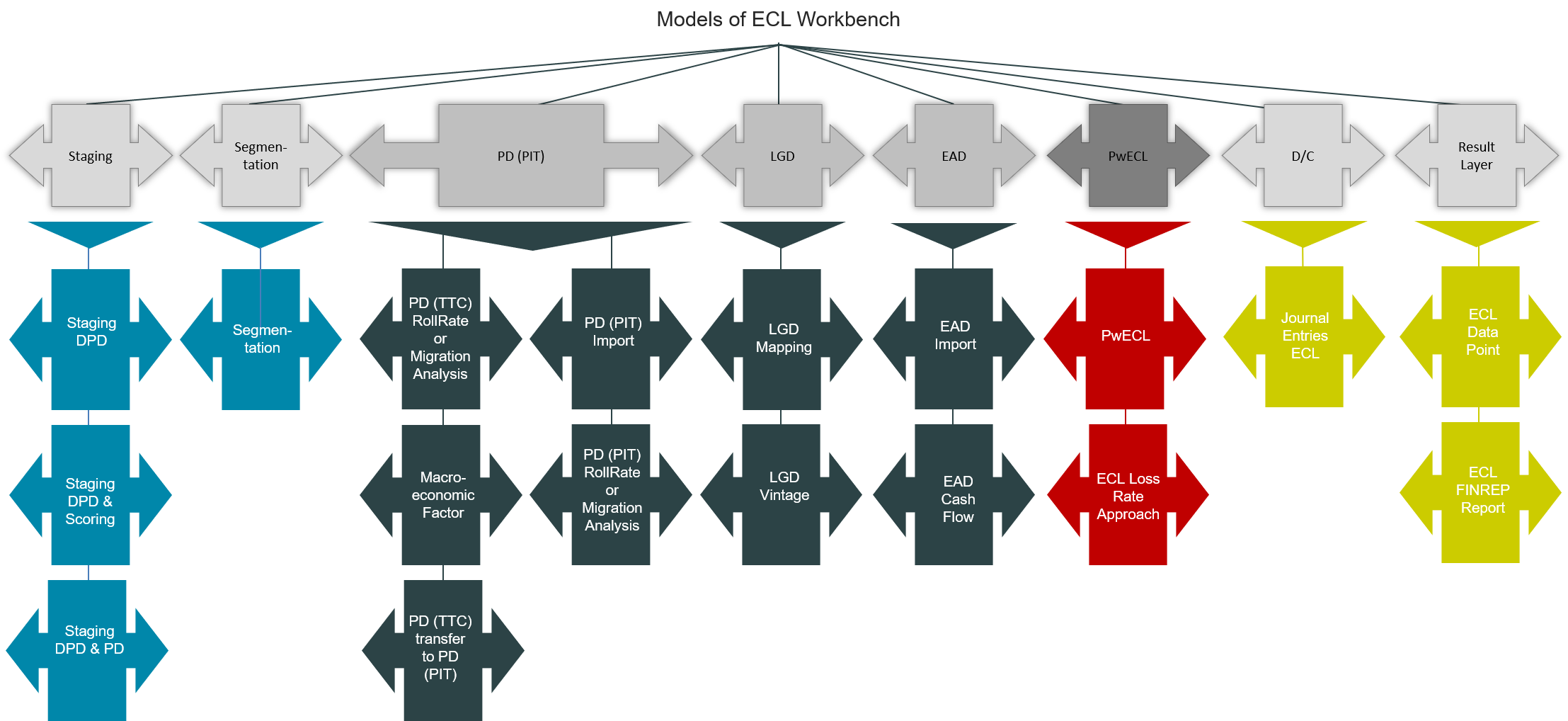The Collective Impairment Workbench is a modular solution that calculates probability-weighted Expected Credit Losses (pwECL) in line with GAAP and regulatory requirements. For IFRS9 this includes the calculation of 12-month ECLs for stage 1 as well as lifetime ECLs for assets assigned to stage 2.
The workbench provides a browser-based UI to design master scenarios, to assign sets of macroeconomic parameters to specific models, to perform simulation runs, to calibrate PDs etc.
The Collective Impairment Workbench can be used as an integrated module into an end-to-end solution built with Jabatix Finance Components or it can be used as a stand-alone solution.
In both implementation scenarios, deals with similar credit risk characteristics must be grouped in segments and must be assigned (depending on their deterioration of credit quality) to one of the three impairment stages.
Calculation of Expected Credit Losses (ECL)
The process chain of the Collective Impairment Workbench is designed in different steps. Each step has a clearly defined input/output interface. The modular approach provides various modules for each step. Depending on the data and scope available, a financial institution can select the appropriate module for each step, comprising a large number of predefined models. Among other things, these models are geared to the needs of the business types (e.g. loans, commitments, guarantees).
The module "Collective Impairment Workbench" supports the
- calculation of forward-looking, probability-weighted expected credit losses.
- definition and maintenance of calculation models, master scenarios considering probability-weighted economic scenarios
It also supports simulation and comparison of alternative models and scenarios as well as the tracking of the results of ECL calculation for audit and analysing purposes.
(For details, please read more in the manual: Collective Impairment Workbench.)

